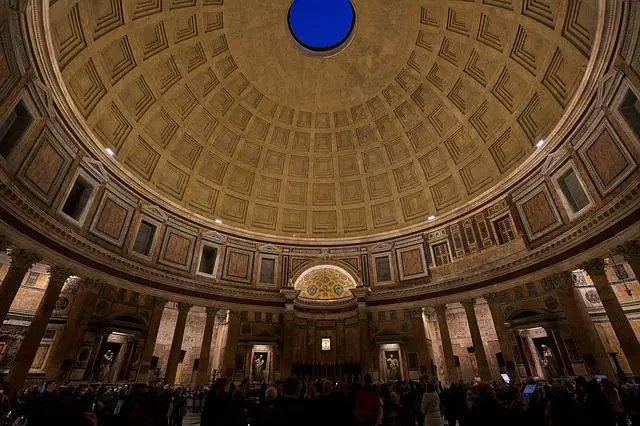
| Further Reading | The 5 Roman Emperors Of The Julio-Claudian Dynasty |
The Roman Pantheon was built by Marcus Agrippa during the reign of Augustus (27 BC – 14 AD). This fascinating building is one of the great wonders of the ancient world and features a massive hole in the concrete roof of the building. This hole would allow rain to come into the building but the Romans solved the problem of rain destroying the floor of the pantheon.
When the Pantheon was built by Marcus Agrippa the floor was raised and built in a circle under the oculus in the roof. This floor was raised by 30 centimeters or about 1 foot. When the rain came in through the hole in the roof it would flow to the perimeter of the circular floor where a series of drains would take it outside.
Roman engineering is simply amazing. When you walk through the Pantheon and other ancient structures it is hard to believe that they were built almost 2,000 years ago. Most of them are still standing and have a better quality than buildings today!
Here at The History Ace, I strive to publish the best history articles on the internet. If in the end, you liked this article then consider subscribing to the free newsletter and sharing it around the web.
Without further ado, here is an entire article answering the question of how the Romans solved the problem of rain in the Pantheon.
Building The Pantheon: Why Did The Romans Put A Hole In The Roof?
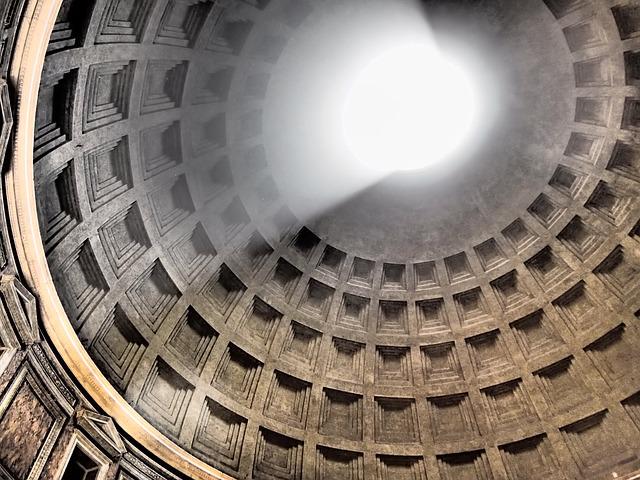
The pantheon itself was built by Marcus Agrippa after the fall of the late Roman Republic in 27 BC. He was an extremely close friend of Emperor Augustus and was awarded the Roman consulship 3 times, making him second in command to Augustus himself.
Agrippa himself was known to be rather conservative and avoided the public eye. However, during his consulships, he was put in charge of building up the city of Rome to bolster the regime of Augustus. While Agrippa built several large buildings none are more magnificent than the Pantheon.
The Pantheon itself was built on top of a former temple in Rome. Agrippa personally owned this land and wanted to build a public temple that was dedicated to all the Roman. This temple would be open to the people of Rome and was completed during Agrippa’s third consulship.
The problem however was the population size of Rome during this time. It is estimated that the population of Rome during the reign of Augustus was between 600,000-800,000 people. Agrippa would have to construct a massive temple to accommodate large portions of people for worship.
The easiest way for Agrippa to house such a large portion of people was to build a giant hall. This hall would need to have a roof and be able to withstand the elements. Agrippa put Roman engineering to the test and designed a concrete dome that had a hole in the center for light to come through. The light would move around the pantheon in the direction of the sun, illuminating different portions of the temple.
Solving The Problem Of Rain Coming Into The Pantheon
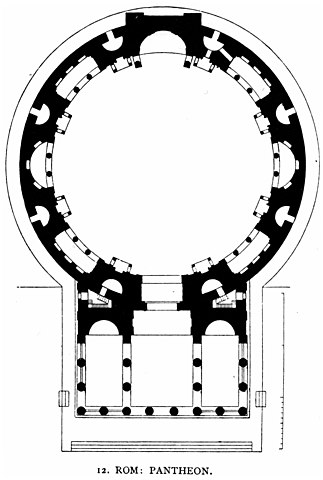
Most people think that the hole in the Pantheon’s roof was an oversight on the part of the Roman engineers because the rain would pool in the building. However, the Roman engineers were keenly aware of how to prevent water damage from destroying the original rock foundation on the floor of the temple.
The Pantheon’s floor plan is a perfect circle. The oculus, or hole, in the roof of the Pantheon, is directly over the dead center of this circle. This means that if rain fell into the pantheon it would land in the exact center of the Pantheon’s circular floor.
The center of this circular floor plan is raised by about 1 foot or 30 centimeters. Because of this all liquid on the Pantheon’s floor would flow to the outside perimeter of the circle. On the perimeter of the circular floor plan is a series of drain holes on the floor that is further depressed. All water on the circular floor of the Pantheon will flow to these drains.
From these drains, the water will flow to the outlets on the exterior of the Pantheon itself. Once outside the water would run down the side of the Pantheon into the street where it would either evaporate or pool. When you visit the Roman Pantheon make sure you walk to the edge of the circular floor to find these drains, they are easy to miss if you don’t know what to look for.
The Romans designed the Pantheon so that all water would naturally flow out of the building. Most people visiting the Pantheon don’t realize that they are actually walking ‘uphill’ when they enter the Temple. If you close your eyes while you walk towards the center of the floor you will feel the floor gradually rise.
It is fascinating that nearly 2,000 years ago Roman engineers were able to make one of the most influential buildings of all time. Many of the world’s most famous buildings draw inspiration from the Pantheon and its floor plan. However, thanks to modern plumbing most buildings don’t have the raised floor plan of the Pantheon. We can still stand to learn from these ancient engineers.
Conclusion
There you have it; an entire article dedicated to answering the question of how the Romans solved the problem of rain in the Pantheon.
Ancient architecture is a fascinating subject. Cultures from all over the world have built some of the most amazing structures that continue to inspire people to this day. Potential graduate students of history will find substantial amounts of research possibilities looking into the circular floor plan of the Roman Pantheon.
I hope you enjoyed this article going over the Roman Pantheon and its ‘rain problem.’ Here at The History Ace, I strive to publish the best history articles on the internet. If you enjoyed this article then consider subscribing to the free newsletter and sharing it around the web.
Further, you can check out some of the other articles below.
-
How The American Revolution Changed The World

Here is how the American Revolution changed the world. Many people are not aware of just how important this event actually was.
-
Why The Roman People Loved Chariot Racing
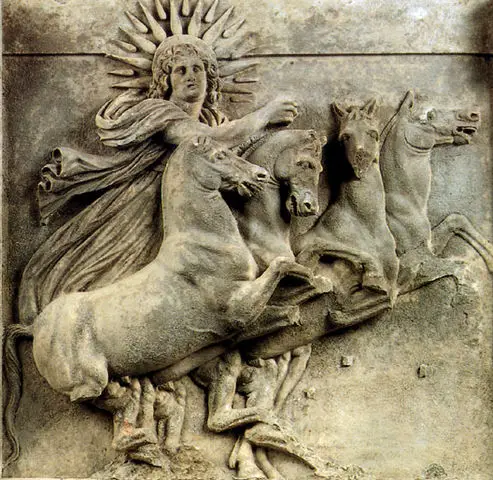
Why did the Roman people love chariot racing? Well it all comes down to these 3 reasons.
-
The Design and Color of Roman Chariots
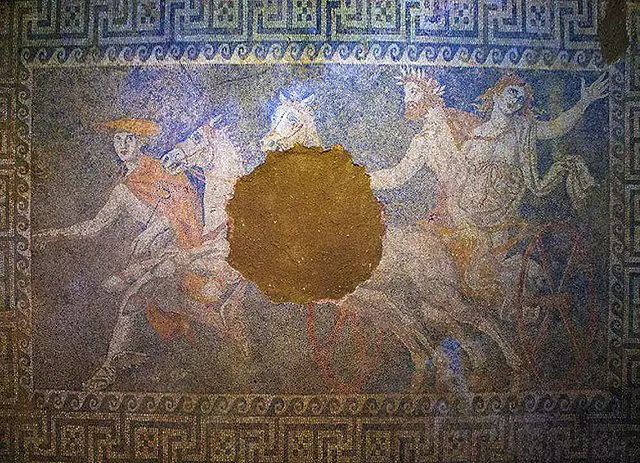
What was the design and color of Roman Chariots? Were they faster or slower then normal chariots? Well here is everything!